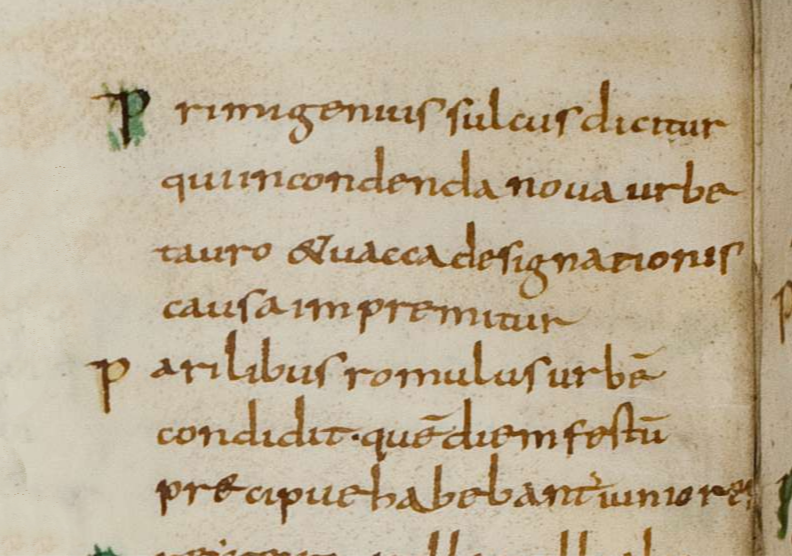Caracalla's Parthian Campaign
- sulla80

- Oct 11
- 4 min read
Updated: Oct 12
Today's coin - cited by the auction house (Leu) with the less than informative: "from a European collection, formed before 2005" - was also described as "CYPRUS. Koinon of Cyprus. Caracalla, 198-217. Tetradrachm (Billon, 25 mm, 11.15 g, 12 h), 215-217 CE." A coin from the birth place of Aphrodite (or at least the place where she emerge from the sea foam) appealed to me.



Obv: AYT KAI ANTⲰNIN[OC CЄ] Laureate head of Caracalla to right.
Rev: ΔHMAPX Є YΠATOC TO Δ Eagle with spread wings standing facing on grain ear, head to left and holding wreath in beak.
Ref: Prieur 1578. RPC V.3 online 79667. Small deposit on the obverse, otherwise, very fine.
Questioning the Mint
Prieur is clear "The attribution of these coins to Cyprus cannot be considered proven".
Michel Amandry describes these tetradrachms in “Sur certains tétradrachmes provinciaux de Syrie”, Syria, HS III | 2016, 177-182.

The critical passage explaining the origin of the long-standing “Cyprus” attribution. Seyrig (1932) noticed the shared ear-of-grain symbol between certain Vespasian-era Cypriot issues and later Caracalla tetradrachms, so he proposed Cyprus as the mint. Later cataloguers (Bellinger, Prieur) followed him, but - as the author admits here - “faute de mieux” (“for lack of better evidence”) - meaning that the assignment was accepted by default, not demonstrated.
He makes a similar comment on his webpage “Cypriote coinage under Roman rule (30 BC – 3rd century AD)”, from Kyprios Character. History, Archaeology & Numismatics of Ancient Cyprus.
Other series that have been given to Cyprus include: silver tetradrachms of Caracalla with an eagle on an ear of wheat on the reverse, and bronze coins of Elagabalus and Severus Alexander, with ΔΕ above star within wreath. In the former case, the attribution comes from Seyrig, and it has been accepted, yet without much evidence. In the latter case, although these coins are very common on the island, they are usually attributed to Antioch.Seyrig's main argument in his 1932 paper:

A Syrian type coin under Vespasian was had the reverse replaced sometimes by the image of the famous sanctuary of Aphrodite at Paphos, These coins often bear in the exergue an ear of wheat so closely identical to that of the Caracalla tetradrachms that one is spontaneously tempted to attribute both series to the same mint. The ear of wheat recalls the grain already shown on the coins of Evagoras I and must be a symbol of the cereals for which Cyprus was particularly productive.
Where was Caracalla in 215-17 CE?
This coin was minted 215-217 CE - which we know from the information on the reverse of the coin "ΔHMAPX Є YΠATOC TO Δ" which is the fourth consulship, i.e. AD 213 onward and the timing of his eastern campaign.
Caracalla (Marcus Aurelius Antoninus) based himself at Antioch in Syria from roughly 214–217 CE because it was the strategic, logistical, and administrative hub for his planned eastern (Parthian) campaign. It also served as his imperial residence during a prolonged period of military preparation, troop concentration, and governance of the eastern provinces. Antioch’s facilities, population, and location made it the de facto Roman capital of the East.
Livius.org gives us a concise timeline for Caracalla during the period in when this coin was minted:
214 CE Leaves for the east; visits the Lower Danube, Asia, visits Nicomedia
215 CE Stay in Antioch; his mother Julia Domna in charge of the offices of a libellis and ab epistulis; proceeds to Alexandria (inscription at Nahr al-Kalb near Berytus)
216 CE Return to Antioch; preparations for war against the Parthian Empire; attack on Arbela
217 CE Killed near Harran; succeeded by Macrinus, his praetorian prefectHerodian tells of an elaborate plan by Caracalla to ambush the Parthian king, Artabanus IV, with an offer of marriage.
Not long after this, Caracalla, desirous of gaining the title Parthicus and of being able to report to the Romans that he had conquered all the Eastern barbarians, even though there was peace everywhere, devised the following plan. He wrote a letter to the king of Parthia (his name was Artabanus) and sent to him an embassy laden with gifts of expensive materials and fine workmanship.
-Herodian, 4.10 Negotiations with ParthiaMacrinus plotted the end of Caracalla's reign
Macrinus summoned the centurion (in whom he had confidence because the man had served him before, and had received many favors from him). The prefect persuaded Martialis to be on the watch for a suitable opportunity to carry out a plot against the emperor. Won over by Macrinus' promises, Martialis, since he hated the emperor and was eager to avenge his brother, gladly promised to do the deed when the proper occasion arose.
-Herodian 4.13 Murder of Caracallaand ultimately succeeded.
Correcting the mint
Roman Provincial Coins V.3 assigns this coin to Ptolemais (Ake‑Ptolemais), Syria Phoenice, reflecting recent die‑studies and regional mint‑network work on Severan tetradrachms. It is generally considered Ptolemaïs, though it circulated widely including to Cyprus. The design (eagle with wreath) signaled imperial victory, an association with Zeus/Jupiter, and a uniform regional silver coin (debased) used for taxation and military pay in the East.
Ake‑Ptolemais is the ancient name for the city located at today’s Acre (Hebrew: Akko; Arabic: Akka) on Israel’s northern coast (approx. 32.92° N, 35.07° E). Authoritative sources identify Ptolemais (Phoenicia) directly with modern Acre. (see: Pleiades)

Around 37 BCE the Romans captured the port of Akko which became Colonia Claudia Felix Ptolemais Garmanica Stabilis. Ptolemais remained under Roman for nearly seven centuries until it taken from the Byzantine Romans by the Arab Muslim army of ʿAmr ibn al-ʿĀṣ, one of the Prophet Muhammad's generals, around 636–638 CE, during the early Islamic conquest of the Levant following the Battle of Yarmouk.




Comments